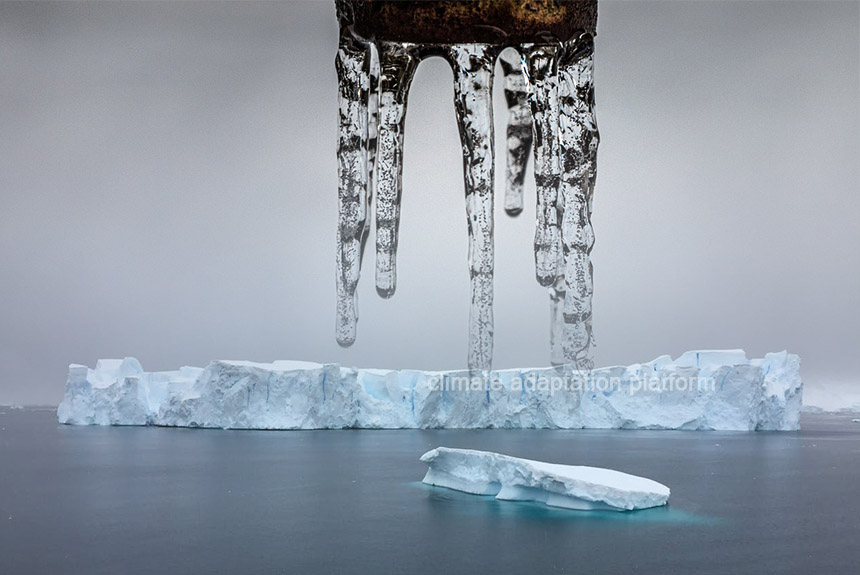Researchers dubbed Antarctica’s Thwaites Glacier, a large body of ice around the size of Florida, the “Doomsday Glacier” because its melting could raise global sea levels by up to two feet.
Thwaites already contributes 4% to global sea-level rise, but its complete melting could lead to around 10 feet of sea-level rise and spell catastrophe for coastal communities worldwide.
Many studies have shown the Thwaites’s vulnerability to the warming world and how the warm ocean waters are causing it to melt rapidly.
A 2022 study published in Nature Geoscience, “Rapid retreat of Thwaites Glacier in the pre-satellite era”, mapped the glacier’s historical retreat using underwater drones to map the sea floor. They found that it has melted twice as fast in the last 200 years as observed in recent years.
Scientists believe that this rapid pace of melting could be triggered again in the future. Dr Robert Larter, a marine geophysicist from the British Antarctic Survey who co-authored the study, says that the Thwaites are “holding on today by its fingernails”.
Now, a 2024 study conducted by the British Antarctic Survey (BAS) scientists, “Tipping point in ice-sheet grounding-zone melting due to ocean water intrusion”, has identified a new and alarming way in which warm seawater can lap at the underside of ground-based ice, speeding up its melting. The study’s findings published in Nature Geoscience journal say that scientific models have not considered this accelerated melting rate to predict future sea levels. This means that projections of SLR might be significant underestimates, says Alex Bradley, an ice dynamics researcher at BAS and lead author of the study.
The study focuses on the ice sheet grounding line, where the ice rises from the seabed and starts to float. Warm ocean water seeps into the ice sheet and causes it to melt rapidly, which can lead to a “tipping point”, according to the study’s authors. When warm ocean water seeps in, it opens cavities in the ice, allowing more warm water to flow in, increasing the melting and growth of these cavities.
Although the study does not give a timeframe for this tipping point, its implications are worrying because the Antarctic is already shedding an average of 150 billion metric tons of ice annually.
To further study the ice’s melting rate, NASA’s Jet Propulsion Laboratory scientists are developing autonomous underwater robots to dive deep into Antarctica’s giant ice shelves. CNN reports that these freed underwater robots will collect data on how rapidly the ice is melting and measure the rate of sea level rise it will cause.
Scientists have tested a prototype of this untethered cylindrical robot in the icy waters of the Beaufort Sea north of Alaska to gather data at 100 feet deep in March, a first step in the “IceNode” project with the eventual goal of releasing a fleet of these robots in Antarctica to study the melting rate of its ice sheets.
These IceNode robots, measuring 8 feet long and 10 inches in diameter, will ride the ocean currents directed by special software and attach themselves to the ice. The article notes that once in place, they will “monitor how fast the warmer, salty ocean water is melting the ice, as well as how quickly the cold meltwater is sinking” (Paddison, 2024).
In 2019, scientists also deployed a torpedo-like robot called Icefin, which allowed them to explore Antarctica’s deep waters, which are inaccessible to humans and impossible to survey. The remotely operated system took images and recorded information about the temperature and salinity of the water, as well as the ocean currents (Paddison, 2023).
What they found showed a nuanced picture. While the glacier is receding, the melt rate beneath the shelf is lower than expected because the cold fresh water at the bottom of the glacier, between the ocean and the ice shelf, suppresses the melting. However, despite the slower melting rate, scientists noted that there is still the problem of rapid glacier retreat (Paddison, 2023).
They also found the rapid melting occurring underneath the glacier, with crevasses and staircase-like terraces going through the ice shelf deep under glaciers. Melting is happening rapidly due to the incursion of warm, salty water that seeps through and widens the cracks and crevasses.
The studies featured in this article are just some of the many others showing the vulnerability of Antarctica’s ice to the warming ocean waters linked to climate change. Researchers’ innovative approach, using robots and other types of observation and measurements, is essential in understanding how Thwaites, the so-called “Doomsday Glacier,” will change.
This innovative approach will lead to more accurate projections about sea level rise, which can be helpful in climate mitigation efforts and climate adaptation for coastal communities.
Sources:
Graham, A.G.C., Wåhlin, A., Hogan, K.A. et al. Rapid retreat of Thwaites Glacier in the pre-satellite era. Nat. Geosci. 15, 706–713 (2022). https://doi.org/10.1038/s41561-022-01019-9
Bradley, A.T., Hewitt, I.J. Tipping point in ice-sheet grounding-zone melting due to ocean water intrusion. Nat. Geosci. 17, 631–637 (2024). https://doi.org/10.1038/s41561-024-01465-7
Paddison, L. (2024, September 3). How long do we have until sea level rise swallows coastal cities? This fleet of ocean robots will help find out. CNN. Retrieved from https://edition.cnn.com/2024/09/03/climate/sea-level-rise-antarctica-robots/index.html
Paddison, L. (2024, May 21). Ocean water is rushing miles underneath the ‘Doomsday Glacier’ with potentially dire impacts on sea level rise. CNN. Retrieved from https://edition.cnn.com/2024/05/20/climate/doomsday-glacier-melt-antarctica-climate-intl/index.html
Paddison, L. (2023, February 15). So-called Doomsday Glacier is ‘in trouble,’ scientists say after finding surprising formations under ice shelf. CNN. Retrieved from https://edition.cnn.com/2023/02/15/world/thwaites-doomsday-glacier-sea-level-climate-intl/



Leave a Reply